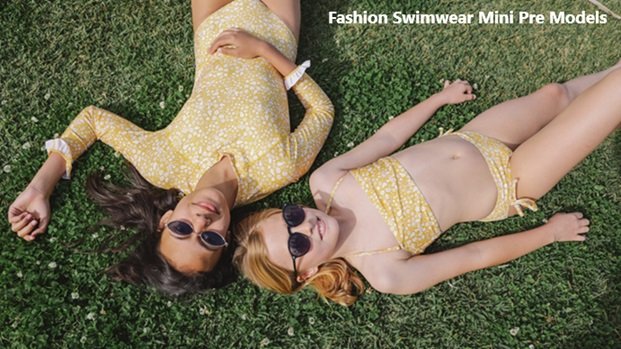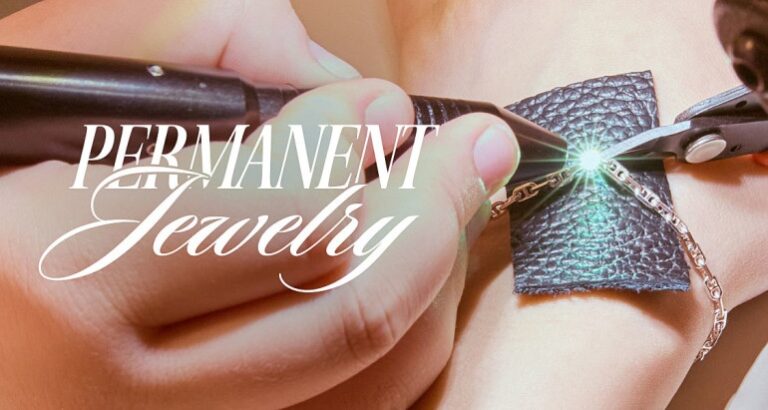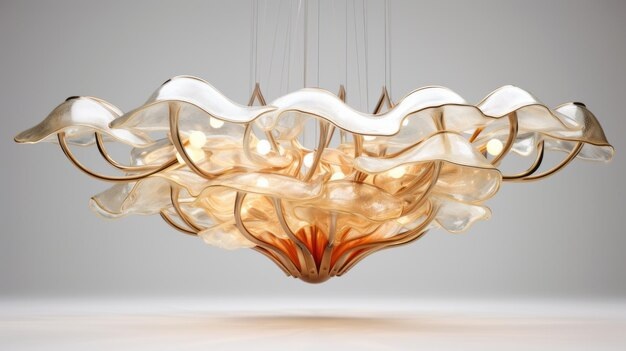
Fashion Swimwear Mini Pre Models
In today’s fast-paced fashion industry, swimwear designers are constantly seeking new ways to streamline production, enhance creativity, and stay ahead of trends. One of the most innovative tools at their disposal is the use of mini pre models. These small-scale prototypes have gained popularity for their ability to showcase intricate swimwear designs before full-scale production begins. By using fashion swimwear mini pre models, brands can visualize their collections, refine designs, and make decisions more efficiently.
Let’s explore how mini pre-models are changing the swimwear industry and why they’ve become a must-have tool for designers and brands alike.
What Are Fashion Swimwear Mini Pre Models?
Fashion swimwear mini pre models are small-scale, tangible representations of swimwear designs, created as part of the pre-production process. These models allow designers to showcase their ideas in a three-dimensional format that mimics the appearance, style, and even fabric textures of full-sized swimwear.
While traditional prototypes in fashion are usually created in life-size, mini pre-models focus on delivering a detailed and compact version of a product. These miniaturized designs can still capture the essence of a swimsuit’s fit, cut, and style, making them ideal for visualizing concepts during the design phase.
The Role of Mini Pre Models in Fashion Design
In the swimwear industry, where fit and fabric are crucial to success, mini pre models provide designers with a powerful tool to fine-tune their creations. Designers can use these models to experiment with different cuts, colors, and patterns without the expense of creating full-size samples. For example, if a swimwear collection includes multiple pieces like bikinis, one-pieces, and cover-ups, mini pre models can help a designer see how the pieces fit together within the collection before committing to production.
These models are also essential for sharing ideas with other stakeholders. A mini pre model of a swimsuit allows marketing teams, manufacturers, and even buyers to see exactly what the final product will look like, leading to faster decision-making and fewer production errors.
How Mini Pre Models Are Created for Swimwear
Creating fashion swimwear mini pre models involves a blend of traditional craftsmanship and cutting-edge technology. The process typically begins with a designer sketching out the swimwear design or creating a 3D digital model using CAD software. From there, the design is translated into a physical form, often using 3D printing technology or specialized miniature textile techniques.
Mini pre-models can be made from a variety of materials, including synthetic fabrics, plastics, or even scaled-down versions of the same materials that would be used in the final product. This helps designers assess how fabrics will behave on a larger scale and make adjustments to patterns and materials before committing to full production.
The Impact of Mini Pre Models on Swimwear Trends
Fashion swimwear mini pre models are not just tools for designers—they can also shape upcoming swimwear trends. By creating mini pre models, designers can experiment with bold patterns, cuts, and fabric innovations, testing how these elements will resonate with customers. These models allow brands to predict which styles will likely be successful in the market, helping to set new trends in swimwear fashion.
For example, a designer might use a mini pre model to explore the use of sustainable fabrics, testing how they stretch, hold color, and maintain shape in a swimwear design. If the experiment is successful, the designer can confidently move forward with a larger-scale production, knowing that the mini pre model has accurately predicted the performance of the material.
Why Swimwear Brands Are Adopting Mini Pre Models
Swimwear brands are increasingly adopting mini pre models because of the many advantages they offer throughout the design and production process. One of the biggest benefits is cost reduction. Since mini pre models use less material and require fewer resources to produce, brands can save money while still maintaining a high level of design precision.
Moreover, these models speed up the design approval process. Instead of waiting weeks for full-size prototypes to be produced, brands can create mini pre models in a matter of days, allowing designers, stakeholders, and buyers to provide feedback early in the process. This quick turnaround time helps brands stay ahead of the competition and respond to market trends faster.
Advantages of Using Mini Pre Models in Swimwear
Enhanced Precision and Fit
Mini pre models allow designers to focus on perfecting the fit and cut of swimwear. By seeing how the mini model behaves, they can adjust patterns and measurements to ensure the final product will fit perfectly on a full-scale human body.
Improved Fabric and Pattern Testing
Testing fabrics on mini pre models helps designers predict how the material will perform in real-life use. For swimwear, which must handle water, sun exposure, and stretch, this testing phase is critical for success.
Better Collaboration Between Designers and Manufacturers
Mini pre models make it easier for designers to communicate their ideas with manufacturers. A physical model provides clear visual guidance, reducing misunderstandings and errors in the production process.
Mini Pre Models vs Digital Prototyping in Swimwear
While both mini pre-models and digital prototyping are valuable tools, they serve different purposes in swimwear design. Digital prototypes are great for visualizing a swimsuit’s overall design on a computer screen, but they lack the tangible quality that mini pre-models provide. Mini pre-models allow designers to see how fabric behaves, how seams are constructed, and how the final product will look in a real-world setting.
Digital prototypes are ideal for early design stages, but mini pre-models take over when it’s time to refine and perfect the swimwear before production.
Fashion Swimwear Mini Pre-Models and Sustainability
The fashion industry, including swimwear, is under increasing pressure to adopt sustainable practices. Mini pre-models help reduce waste by allowing designers to make adjustments early in the process before large quantities of fabric and other resources are used. Some companies are also exploring eco-friendly materials, like biodegradable plastics or recyclable textiles, to create mini pre-models, further reducing their environmental impact.
Mini Pre Models in Swimwear Fashion Shows
Mini pre models are also making their mark in swimwear fashion shows. Before a full collection hits the runway, brands use these models to plan out the show, ensuring that each piece fits together in a cohesive presentation. They are also used behind the scenes for quick styling adjustments and to test how swimwear will move and look under stage lighting.
The Role of 3D Printing in Creating Mini Pre-Models for Swimwear
3D printing has revolutionized the way mini pre-models are created. Designers can now produce highly detailed and customized models in a fraction of the time it used to take. This technology is particularly useful for creating intricate swimwear designs, such as those featuring cutouts, unique textures, or complex straps.
3D-printed models are precise and can replicate even the smallest design details, allowing designers to experiment with innovative new concepts.
Challenges in Fashion Swimwear Mini Pre-Modeling
Despite their many advantages, fashion swimwear mini pre-models come with a few challenges. One of the main limitations is the difficulty in replicating the exact texture and flexibility of swimwear fabrics. While mini pre-models are excellent for showing off design and structure, they may not always perfectly mimic the material behavior of the final product.
Mini Pre-Models as Marketing Tools in Swimwear
Mini pre-models aren’t just for designers—they can also be used as powerful marketing tools. Brands can display mini pre-models in stores or use them in online campaigns to generate excitement around upcoming swimwear collections. These models give customers a sneak peek at new styles, helping to build anticipation and drive early interest.
Future Trends in Fashion Swimwear Mini Pre-Models
The future of mini pre-models in the fashion swimwear industry is bright. As technology advances, we’ll likely see increased use of virtual reality (VR) and augmented reality (AR) in combination with mini pre-models, offering even more immersive design experiences. Customization will also be a key trend, with brands using mini pre-models to create one-of-a-kind, personalized swimwear designs for their customers.
Conclusion
Fashion swimwear mini pre models are transforming the way designers create, refine, and market their collections. From saving costs to enhancing collaboration and even promoting sustainability, these miniaturized prototypes are making a big splash in the swimwear industry. As technology continues to evolve, we can expect even more exciting developments that will further streamline the swimwear design process and push the boundaries of creativity.
FAQs
- How are mini pre-models different from regular prototypes?
- Mini pre-models are smaller, detailed versions of swimwear designs, created to visualize and refine concepts before full-size prototypes are made.
- What materials are used to make fashion swimwear mini pre-models?
- Mini pre-models can be made from a variety of materials, including plastics, textiles, and 3D-printed resins.
- Can mini pre-models be used for custom swimwear designs?
- Yes, mini pre-models are excellent for testing and refining custom designs before producing full-scale versions.
- How do mini pre-models improve the swimwear design process?
- They allow designers to visualize designs, test fabrics, and make necessary adjustments early, saving time and reducing production errors.
- Are mini pre-models cost-effective for small swimwear brands?
- Yes, mini pre-models can help small brands save on production costs by reducing material waste and speeding up the design approval process.
Also, Read About, Kalki Flagship Store: A Destination for Luxury Ethnic Fashion.






